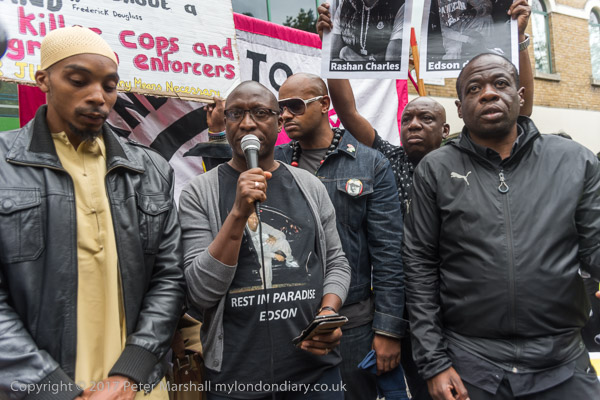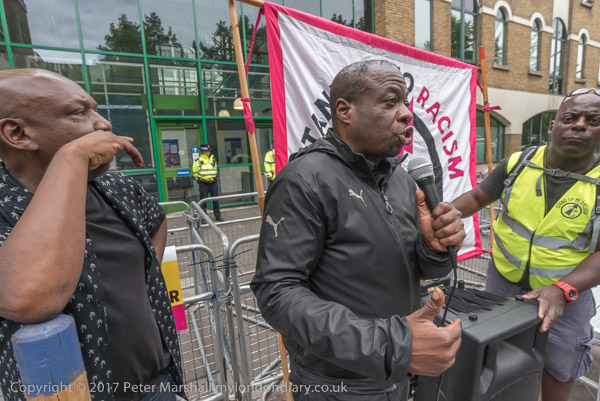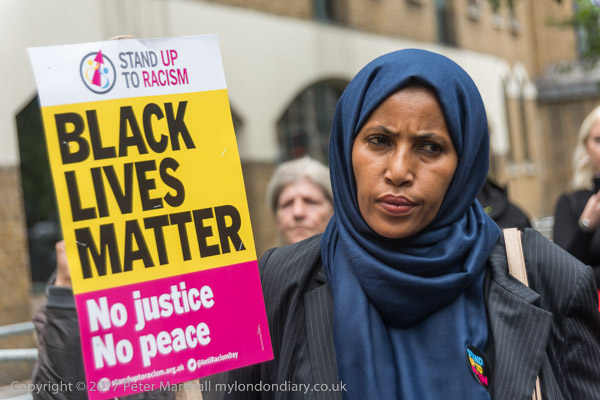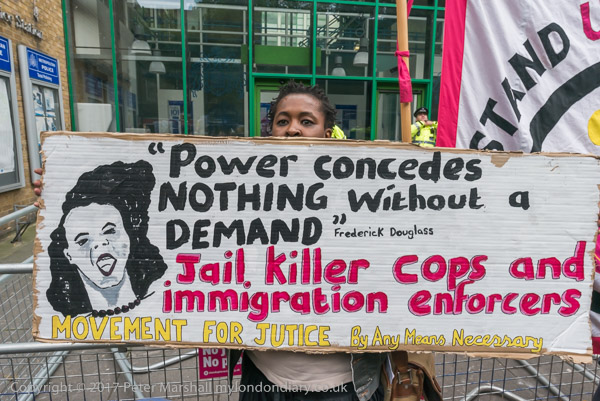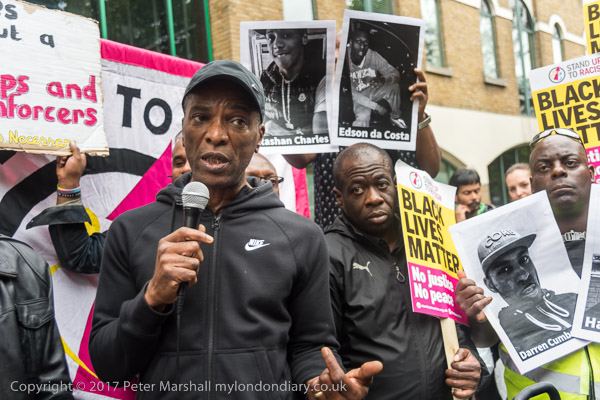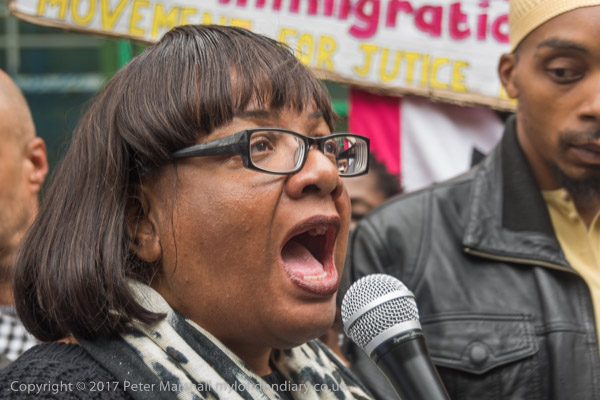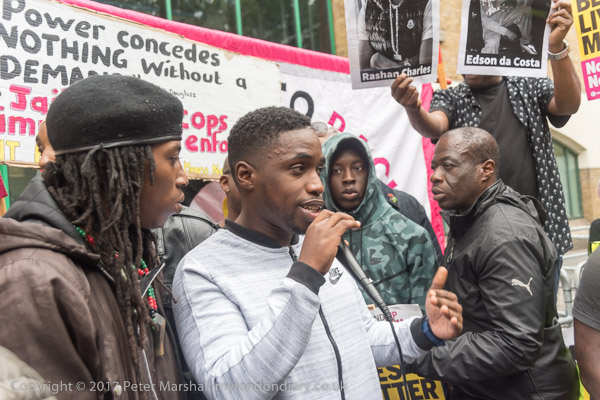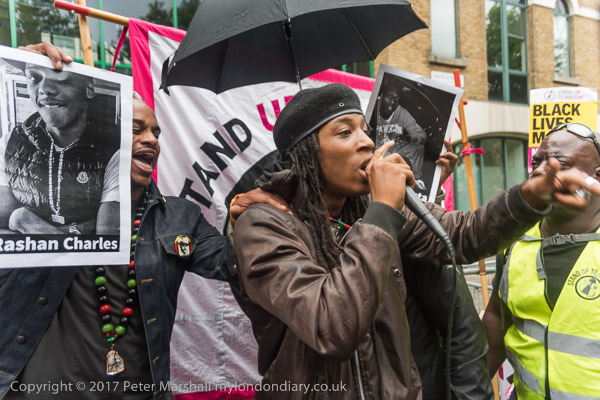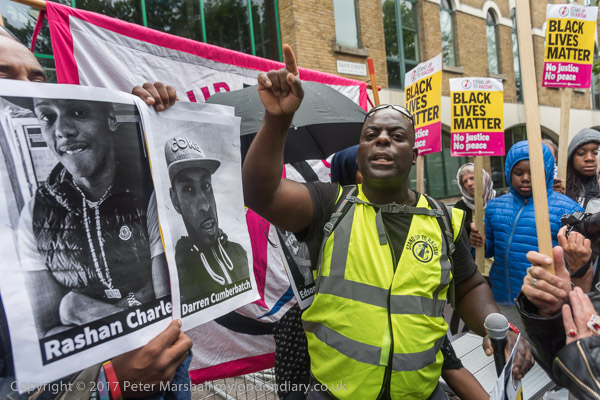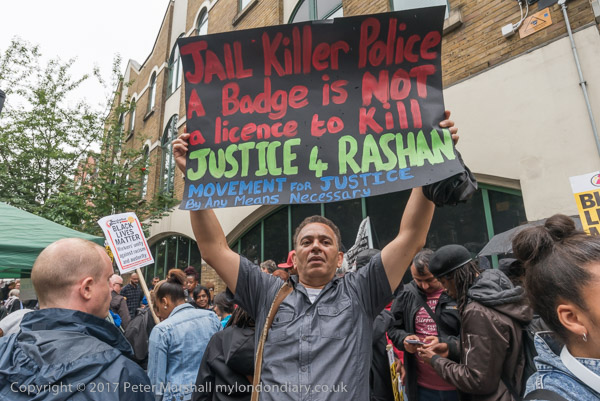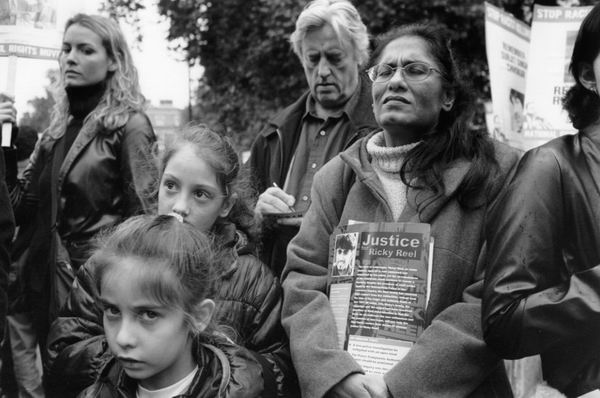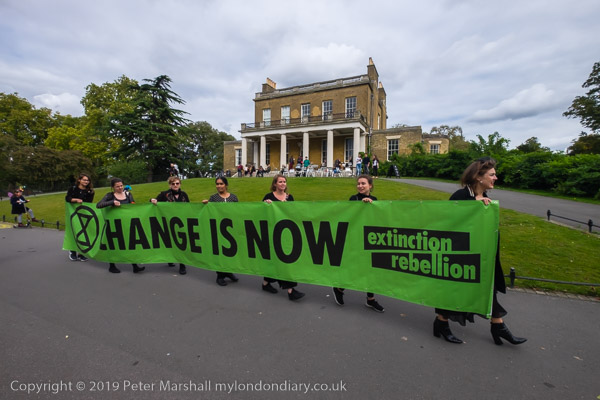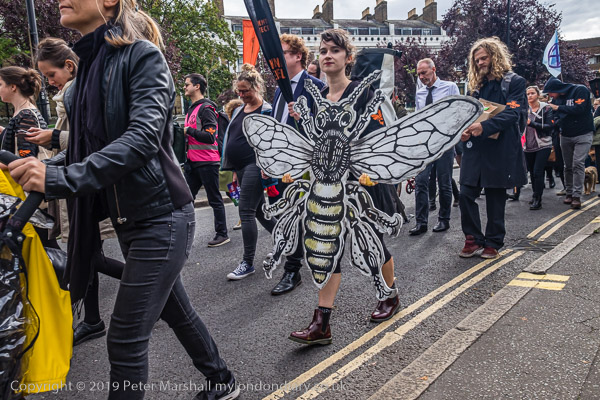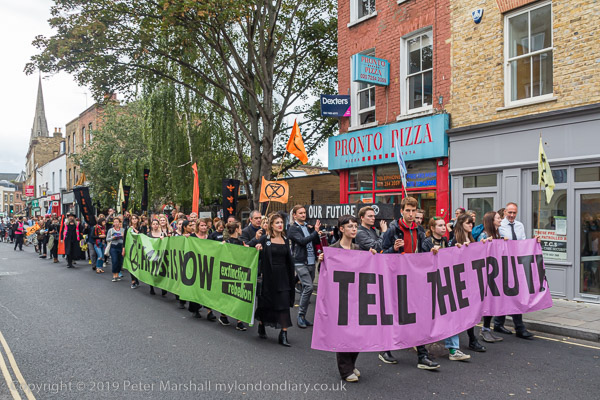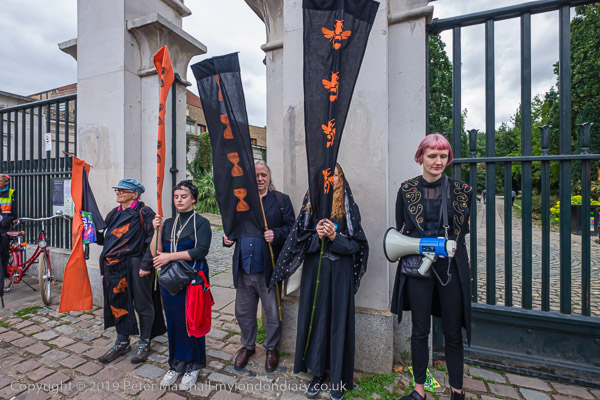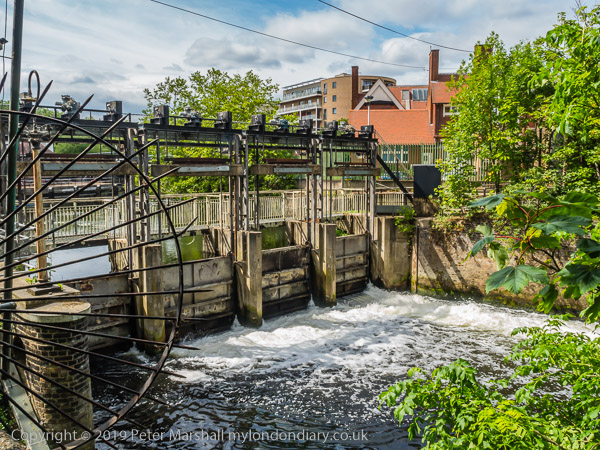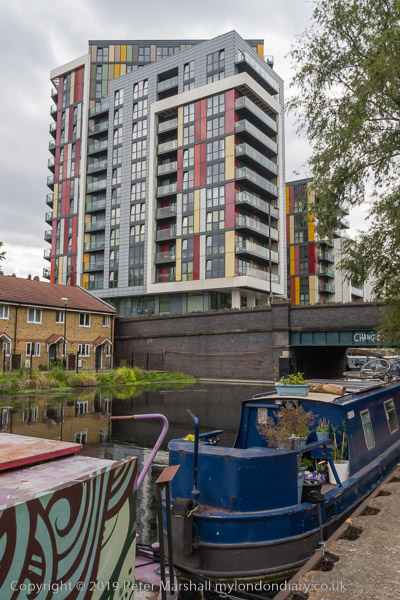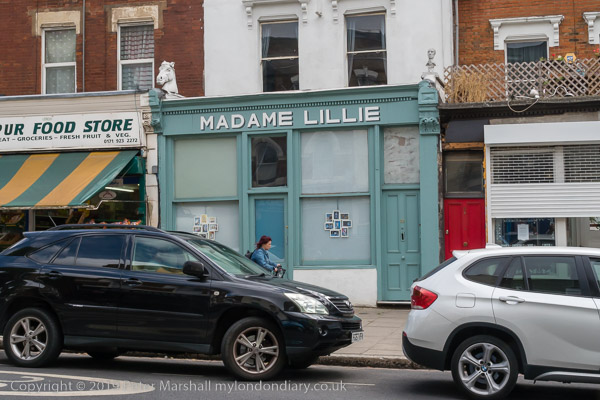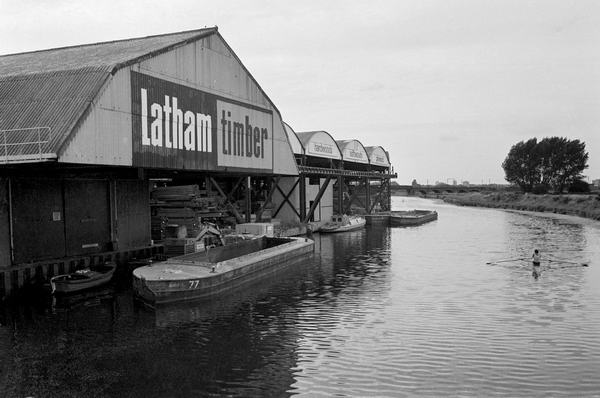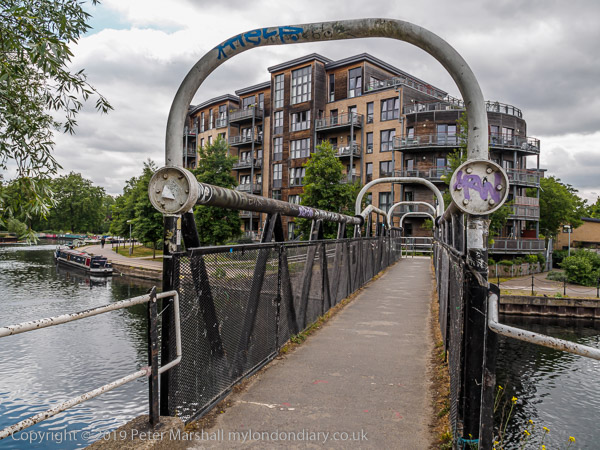Yet More from Stoke Newington: This is the final post about my walk on 8th October 1989 going down Stoke Newington High St towards Dalston with some minor detours. The previous post on this walk was Cemetery, Synagogue & Snooker.
I wondered about the history of these three shops at 75-79 Stoke Newington History with the three-story Golden House Chinese takeaway at its centre. The first-floor brickwork on either side didn’t quite seem to match suggesting to me that the central building may have been a post-war addition to an existing building, or that these first floors may have been a later addition.
This central shop is still a Chinese takeaway but under a different name.
The Cinema Treasures site states that The Vogue Cinema at 38 Stoke Newington High St opened as The Majestic Electric Palace on 15th December 1910 and was closed on 21st June 1958 as a protest by Classic Cinemas against the landlord’s rent rise.
It remained shuttered and closed for 42 years until in November 2000 the foyer was converted into a Turkish restuarant with housing behind, described to me on Flickr as the “best Turkish restaurant ever.” The restaurant owners restored the Vogue sign.
My picture with the Hovis Bread ghost sign was taken from a few yards down Victorian Grove looking towards the cinema across the High Street. The block at right of the picture has now been replaced by a large building with a Tesco Extra on its ground floor.
This street was originally called Victoria Grove, but its name was changed some time in the middle of the last century. Much of the area was redeveloped in the 1970s but these houses dating from the early years of Victoria’s reign in the 1840s or 1850s remain.
This Grade II listed pair with the unusual curved bays and balconies have the name ‘BRIGHTON VILLAS’ on a plaque between the first floor windows, hidden by the curvature of the nearer bay in my photograph. The nearer balcony roof has been replaced since I took this, matching the one on its neighbour.
The wall beside 3 Victorian Grove is still there, but now has only graffiti on it. There are still some industrial units behind the villas of Victorian Grove, though surely they will soon be replaced by expensive flats, but access to these is now thourgh a gated vehicle entrance further down the street.
Should you Google – as I did – ‘Trevor Moneville‘ – you will find he was a 33-year-old from Hackney, was found dead at HMP Lewes on April 18, 2021 from Sudden Death in Epilepsy (SUDEP) because of insufficient and unacceptable management of his care.
But this was a case of history repeating itself. A copy of the poster at top right is also in the collection of Hackney Museum, where the web site notes:
“Trevor Monerville went missing from Stoke Newington police station after being taken into custody on New Year’s Eve, reappearing after several days on the other side of London in Brixton prison. He had multiple injuries and later underwent emergency surgery in Maudsley Hospital. The case highlighted existing concerns about alleged institutional racism in the Metropolitan Police and led to the formation of the Hackney Community Defence Association in 1988.”
And in the centre of the picture is a poster for another, better known case of police brutality. Blair Peach was a young teacher murdered by the police Special Patrol Group who went beserk when policing an anti-racist protest in Southall on 23 April 1979.
Further south Stoke Newington High Street becomes Stoke Newington Road, and back in 1989 I found myself confusing the two. Andy’s Fashions was at 141 Stoke Newington Road. No longer Andy’s, the shop is now Stitch “N” Time offering tailoring, alterations, repairs. and no longer has its wares on the pavement outside or partly blocking the entry to the Stoke Newington Estate of the Industrial Dwellings Society (1885) Ltd.
The IDS was established as the Four Per Cent Dwellings Company in 1885 by “Jewish philanthropists to relieve the overcrowding in homes in the East End of London” and changed its name in 1952. They opened the Stoke Newington Estate in 1903.
Another shop somewhere on Stoke Newington Road, with a fine formation of net curtains for sale, though in my book ‘1989’ I imagined them rather differently, perhaps as the front of a vast army of angels, “Or a phalanx of klansmen or some strange voodoo creatures about to burst out onto the streets of London.“
The book is still available on Blurb, though at a silly price for the print version, but you can see over half of it on the preview there or the full set of pages on the web site where this image and its text is on page 19.
The texts in that book were intended to explore the question of why some scenes grabbed my attention enough to make me fix them as photographs, and why they continue to excite my imagination and I hope that of other viewers.
My walk had ended and I got on the bus to take me to Waterloo for the train home. I almost always sit on the upper deck on double-decker buses and enjoy the views from the windows. As the bus went slowly along Shoreditch High Street close to the junction with Commercial Street it passed the informal market on the pavement where I had time to take three frames through the window. The area looks a little different now, but the last time I went past on a Sunday there was still a rather similar market there.
This is the final post about my walk on 8th October 1989. You can find more pictures from London and elsewhere on Flickr, with both black and white and colour images in albums mainly arranged by the year I took them, such as 1989 London Photos and 1989 London Colour.
Flickr – Facebook – My London Diary – Hull Photos – Lea Valley – Paris
London’s Industrial Heritage – London Photos
All photographs on this page are copyright © Peter Marshall.
Contact me to buy prints or licence to reproduce.



































